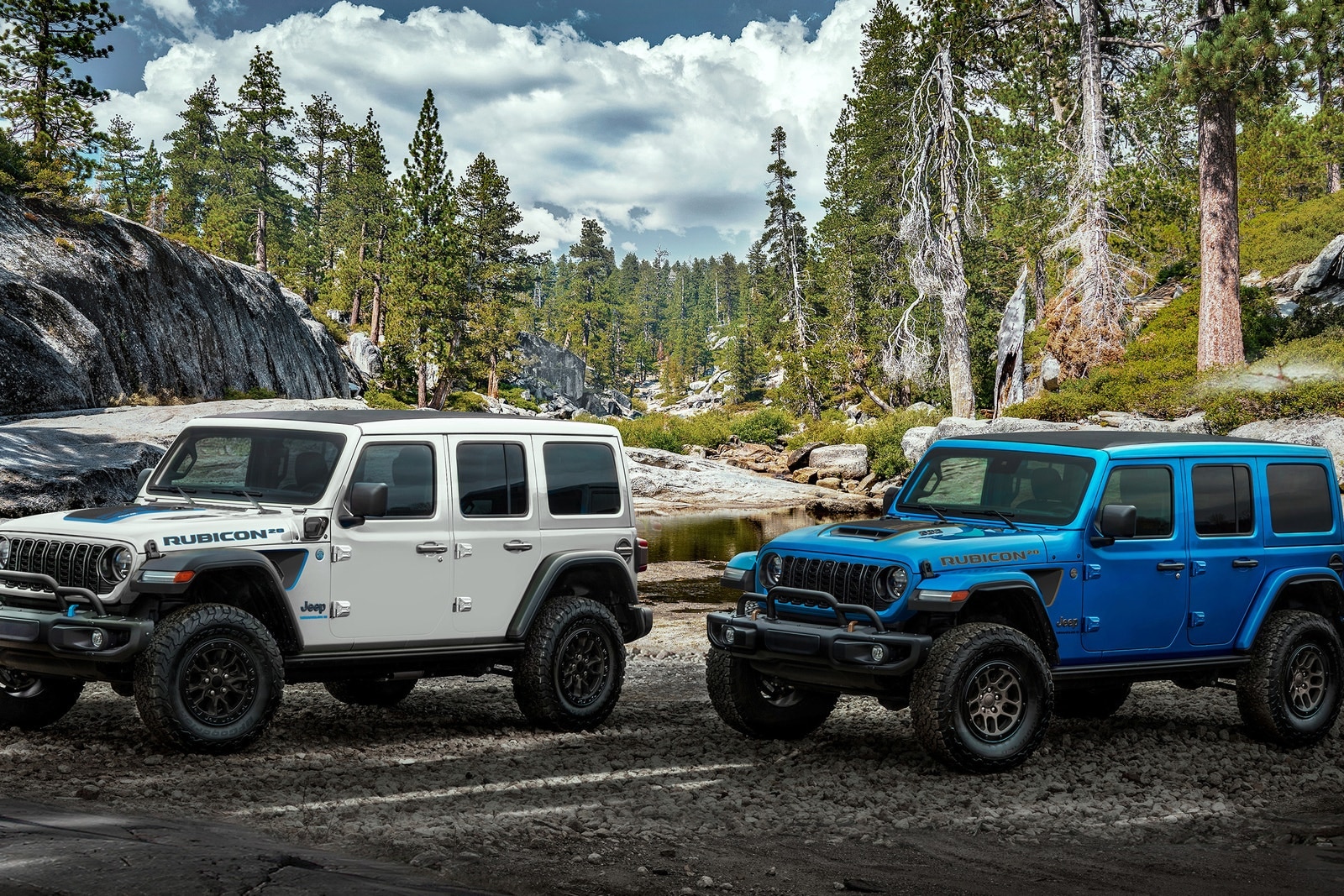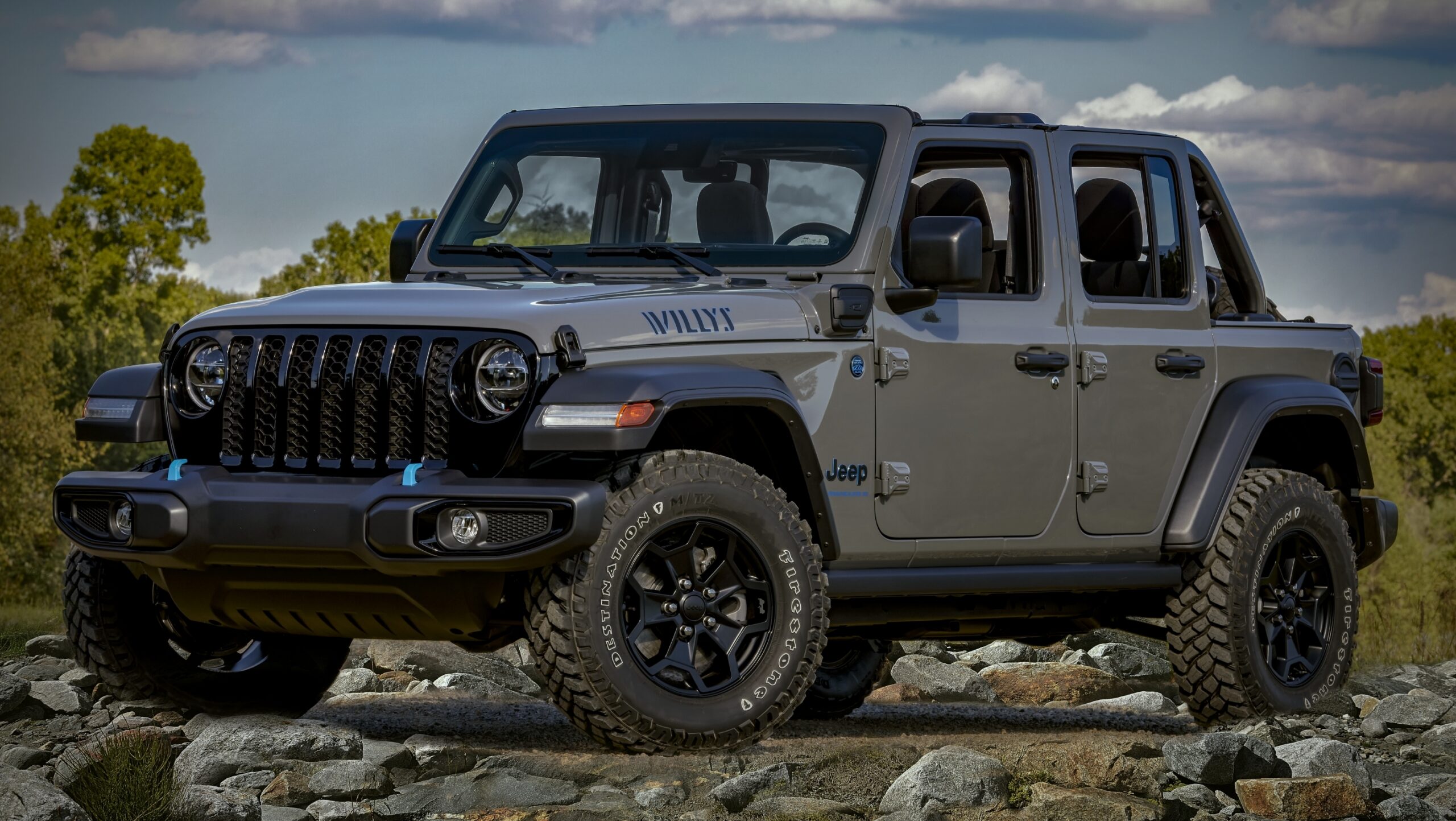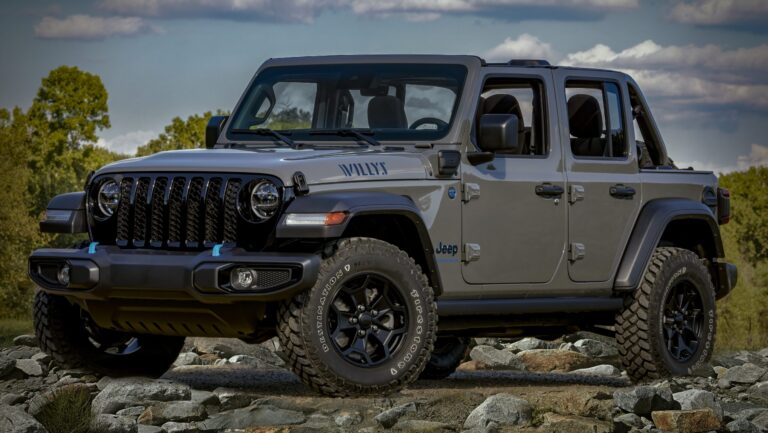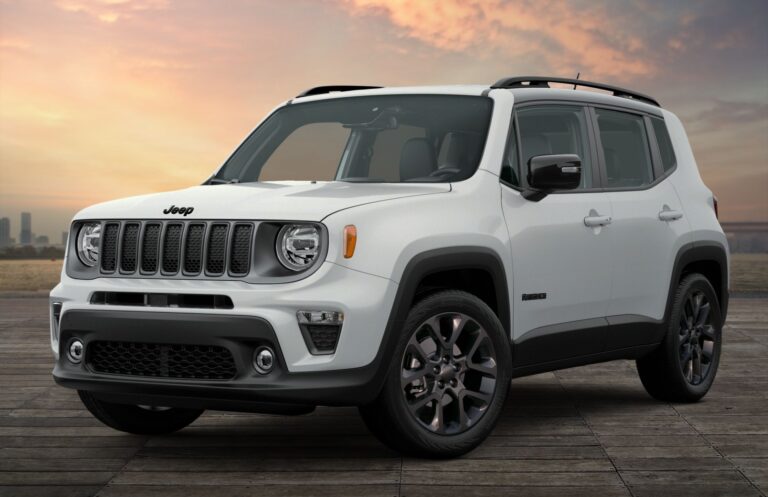Jeep Comanches For Sale: Your Comprehensive Guide to Finding and Owning a Classic Pickup
Jeep Comanches For Sale: Your Comprehensive Guide to Finding and Owning a Classic Pickup /jeeps.truckstrend.com
Introduction: The Enduring Allure of the Jeep Comanche
In the vast landscape of classic American trucks, few command the unique blend of rugged utility, iconic styling, and burgeoning collector appeal quite like the Jeep Comanche. Produced for a relatively brief period from 1986 to 1992, the Comanche (designated internally as the MJ) was Jeep’s answer to the compact pickup truck market, built on the highly successful XJ Cherokee platform. More than just a pickup, it represented a bold experiment by AMC (and later Chrysler) to merge the legendary off-road capability of a Jeep with the practicality of a truck bed.
Jeep Comanches For Sale: Your Comprehensive Guide to Finding and Owning a Classic Pickup
Today, finding Jeep Comanches for sale has become a pursuit for enthusiasts, off-roaders, and those simply seeking a distinctive daily driver. These trucks are celebrated for their unibody construction (a rarity for pickups), robust inline-six engines, and remarkable versatility. Whether you’re looking for a capable workhorse, a formidable trail rig, or a unique piece of automotive history to restore, understanding the nuances of the Comanche market is key. This comprehensive guide will equip you with the knowledge needed to navigate the world of Jeep Comanches for sale, ensuring you make an informed and satisfying purchase.
The Enduring Appeal of the Jeep Comanche
The Comanche’s enduring popularity stems from a confluence of factors, many of which are inherited directly from its Cherokee sibling. Its unibody design, while initially met with skepticism by traditional truck buyers, offered a lighter, more rigid chassis compared to body-on-frame rivals, contributing to better handling and a surprisingly comfortable ride for a truck.
Under the hood, the Comanche primarily featured two robust engine options: the 2.5-liter AMC four-cylinder and, more famously, the 4.0-liter AMC inline-six. The 4.0L, especially in its later "High Output" (HO) iteration (1991-1992), is legendary for its bulletproof reliability, ample torque, and ease of maintenance, making it a highly sought-after powerplant. Paired with either manual (AX-4, AX-5, AX-15) or automatic (AW4) transmissions and various transfer cases (NP207, NP231, NP242), the Comanche offered a drivetrain for every need, from two-wheel drive work trucks to highly capable four-wheel drive off-roaders.
Its distinct styling, combining the familiar Cherokee front end with a dedicated truck bed (available in 6-foot short bed and 7-foot long bed variants), gives the Comanche an unmistakable presence. For many, it represents the last true compact Jeep pickup, preceding the larger, more modern Gladiator by decades. This unique position, combined with its renowned durability and a strong aftermarket sharing many parts with the ubiquitous XJ Cherokee, solidifies its status as a highly desirable classic.
Understanding the Different Comanche Models and Trims
When searching for Jeep Comanches for sale, you’ll encounter a variety of configurations that significantly impact their desirability and price. Knowing these distinctions is crucial for identifying the right truck for your needs.
- Body Styles: The 6-foot short bed is more common and often preferred for off-roading due to its shorter wheelbase, while the 7-foot long bed offers greater utility for hauling.
- Engines:
- 2.5L AMC I4: A capable and economical engine, but generally less powerful. Often found in 2WD base models.
- 4.0L AMC I6: The powerhouse choice. Early models (1987-1990) feature the Renix fuel injection system, known for its robustness but sometimes requiring specific diagnostic tools. Later models (1991-1992) boast the High Output (HO) version, offering more horsepower and torque, and benefiting from a simpler, more common Chrysler engine management system. The 4.0L HO is generally the most sought-after engine.

- Transmissions:
- Manual: AX-4 (4-speed), AX-5 (5-speed, 2.5L), AX-15 (5-speed, 4.0L). The AX-15 is a robust and popular choice for those who prefer to row their own gears.
- Automatic: AW4 (4-speed). An incredibly durable and reliable automatic transmission, often preferred for daily driving and crawling.

- Drivetrain: Comanches were available in 2WD and 4WD. For off-road enthusiasts, the 4WD models, especially those with the NP231 transfer case, are highly desirable.
- Axles: Most Comanches came with a Dana 30 front axle and a Dana 35 rear axle. Crucially, a small number of 4WD models (primarily 4.0L Eliminators and some others) came equipped with the much stronger Dana 44 rear axle. Finding a Comanche with a factory Dana 44 is a significant bonus and can command a premium due to its strength and aftermarket support.
- Trim Levels: Comanches were offered in various trims, each with different features and aesthetics:
- Base/Custom: Stripped-down, no-frills work trucks.
- Pioneer/Chief/X/XLS: Mid-range trims offering more creature comforts like carpeting, nicer seats, and sometimes power options.
- Laredo: A more luxurious trim with chrome accents, upgraded interiors, and more standard features.
- Eliminator: The top-tier sport trim (1988-1992). Often came with the 4.0L engine, bucket seats, special graphics, sport suspension, and sometimes the desirable Dana 44 rear axle. Eliminators are highly coveted by collectors and enthusiasts.

Where to Find Jeep Comanches For Sale
Locating a suitable Jeep Comanche requires a multi-pronged approach, as these vehicles are no longer found on new car lots.
- Online Marketplaces:
- Craigslist/Facebook Marketplace: Your best bet for finding local, private party sales. Be prepared for a wide range of conditions and prices. Use specific search terms like "Jeep Comanche," "Jeep MJ," or "Comanche pickup."
- eBay Motors: Good for finding trucks from a broader geographical area, including those that have been restored or are in better condition.
- Dedicated Forums and Social Media Groups: The Comanche Club forum (ComancheClub.com) is an invaluable resource. Its classifieds section is specifically for Comanches and often features well-maintained or enthusiast-owned trucks. Facebook groups dedicated to Jeep Comanches are also excellent for leads and community insights.
- Bring a Trailer (BaT): For exceptionally clean, low-mileage, or professionally restored examples, BaT often features high-quality Comanches that fetch premium prices.
- Local Classifieds & Word-of-Mouth: Don’t underestimate traditional methods. Check local papers, bulletin boards, and let friends and family know you’re looking. Many gems are found through networking.
- Auto Auctions: Public and dealer auctions can sometimes yield Comanches, but it requires careful inspection beforehand as "as-is" sales are common.
- Specialty Dealerships/Brokers: Some classic car or off-road vehicle dealerships might occasionally have a Comanche in stock, often at a higher price point but potentially in better condition.
What to Look For When Buying a Jeep Comanche: A Buyer’s Guide
Purchasing a vintage vehicle like the Comanche requires a thorough inspection. While the 4.0L engine is remarkably durable, the unibody structure and age mean certain areas demand close attention.
-
Rust is the Enemy: This is paramount. Inspect the entire unibody structure, especially:
- Frame Rails: Check along the entire length, from front to back, particularly where the leaf springs mount in the rear.
- Floorboards and Rocker Panels: Inside the cab and underneath.
- Cab Corners and Bed Mounts: Common rust spots.
- Bed Itself: Look for rust-through, especially in the front corners near the cab.
- Suspension Mounting Points: Ensure they are solid.
- Practical Advice: Bring a small hammer or rubber mallet to gently tap suspicious areas; a solid thud is good, a hollow sound or crunch indicates rust.
-
Engine Condition:
- 4.0L I6: Listen for unusual noises (knocks, ticking), check for oil leaks (rear main seal is common but not always critical), coolant leaks, and signs of overheating (discolored coolant, clogged radiator). Check oil and transmission fluid levels and condition.
- Renix vs. HO: Be aware of the differences. Renix engines (pre-1991) have unique sensors and diagnostics; HO engines (1991-1992) are generally simpler to diagnose.
- Practical Advice: A cold start is ideal. Look for excessive smoke from the exhaust (blue for oil, white for coolant, black for rich fuel).
-
Transmission and Drivetrain:
- Manuals: Check for smooth shifting, clutch engagement, and any grinding.
- Automatics (AW4): Ensure smooth shifts, no harsh clunks, and proper engagement in all gears.
- Transfer Case (4WD): Test 2WD, 4-High, and 4-Low engagement. Listen for unusual noises.
- Axles: Check for excessive play in U-joints and differential leaks.
-
Suspension and Steering:
- Test drive for "death wobble" (violent shaking of the front end at speed, common on lifted Jeeps but can indicate worn steering/suspension components).
- Check ball joints, tie rod ends, control arm bushings, and leaf springs for wear or damage.
-
Interior and Electrical:
- Dashboard cracks are almost universal but check for severe damage.
- Test all lights, gauges, HVAC, and power windows (if equipped).
- Check for water leaks from the windshield seal or rear window.
-
Documentation: Always verify the title is clear and matches the VIN. Ask for maintenance records if available.
Pricing Your Jeep Comanche Purchase
The price of a Jeep Comanche for sale varies dramatically based on its condition, mileage, engine, trim, and features (like 4WD or a Dana 44 axle). Here’s a general breakdown:
| Condition Category | Estimated Price Range (USD) | Key Factors & Notes Comanches are now considered a valuable collector’s item.
The Ownership Experience: Challenges and Rewards
Owning a Jeep Comanche is a distinctive experience, marked by both challenges and significant rewards.
Challenges:
- Parts Availability: While many mechanical components are shared with the XJ Cherokee, specific Comanche body panels (rear quarter panels, bed, tailgate) and interior trim pieces are unique and can be difficult to find in good condition, often requiring a donor truck or specialized fabrication.
- Rust Repair: Due to their age and unibody construction, rust can be a pervasive issue. Extensive rust repair, particularly structural, can be costly and time-consuming.
- Finding Skilled Mechanics: Not all mechanics are familiar with older, less common vehicles like the Comanche. Finding a reputable shop that understands the quirks of Renix engines or vintage Jeep drivetrains can be a challenge.
- Fuel Economy: While not terrible, the 4.0L engine, especially with a 4WD system, won’t deliver modern fuel efficiency.
Rewards:
- Reliability: The 4.0L engine and AW4 transmission are renowned for their longevity, often lasting well over 200,000 miles with proper maintenance.
- Strong Aftermarket Support: Thanks to its XJ Cherokee lineage, a vast array of aftermarket parts for suspension, drivetrain, and performance upgrades are readily available.
- Unique Appeal: The Comanche stands out in a crowd. It’s a conversation starter and a testament to a unique period in Jeep history.
- Community: The Comanche Club and other online communities are incredibly active and supportive, offering a wealth of knowledge, advice, and camaraderie.
- Customization Potential: From mild lifts and bigger tires to full-blown off-road builds or classic restorations, the Comanche is a fantastic platform for personalization.
- Holding Value: Well-maintained or restored Comanches are appreciating in value, making them not just a fun vehicle but potentially a sound investment.
Conclusion: Driving a Piece of Jeep History
The Jeep Comanche holds a special place in the hearts of many, representing a unique blend of Jeep’s legendary capability and the undeniable utility of a pickup truck. For those seeking Jeep Comanches for sale, the journey is one of discovery—unearthing a vehicle that is rugged, reliable, and brimming with character.
While the search may present challenges, from navigating rust concerns to sourcing specific parts, the rewards of ownership are profound. Driving a Comanche means commanding a piece of automotive history, a vehicle that effortlessly blends classic appeal with genuine go-anywhere capability. Whether you envision it as your next off-road companion, a distinctive daily driver, or a cherished restoration project, the Jeep Comanche offers a truly engaging and rewarding ownership experience for the discerning enthusiast. Embrace the hunt, do your homework, and prepare to join the ranks of those who appreciate this truly exceptional Jeep pickup.
Frequently Asked Questions (FAQ) about Jeep Comanches For Sale
Q1: Are Jeep Comanches reliable?
A1: Yes, especially models equipped with the 4.0L inline-six engine and AW4 automatic transmission. These powertrains are known for their exceptional durability and longevity, often exceeding 200,000-300,000 miles with proper maintenance. The main reliability concern tends to be rust on the unibody.
Q2: What’s the best engine for a Comanche?
A2: The 4.0L AMC inline-six engine is widely considered the best for its power, torque, and legendary reliability. The "High Output" (HO) version (1991-1992) is slightly more powerful and easier to work on due to a more common engine management system compared to the earlier Renix system (1987-1990).
Q3: Are parts hard to find for a Comanche?
A3: Many mechanical and interior parts are shared with the highly popular Jeep XJ Cherokee, making them relatively easy to find. However, Comanche-specific body panels (bed, tailgate, rear quarter panels) and some unique trim pieces can be challenging to locate and may require sourcing from a donor vehicle or specialized fabrication.
**Q4: Is the unibody construction an issue for a





